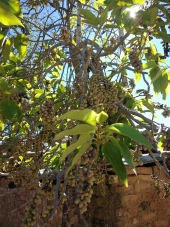John F Dean wrote:I suspect this is persimmon
A great little "somewhat free app" for gardeners is 'Plant Net'. The catch to the free part is that the App sucks up all the info from a leaf, flower, etc. churns it through their data base and sends back what their data stack tells them what it is (usually). Your help in identifying or replying to the App helps them build their database.
Having this on your phone is great. When walking the garden or fence row and seeing some odd plant you just whip out your phone, bring up the Plant Net app, take a photo of a flower or leaf and uploading that will start the process in the App to send you back the results of their data search. It is a great little tool!! :-)










